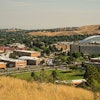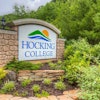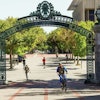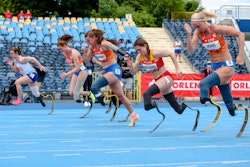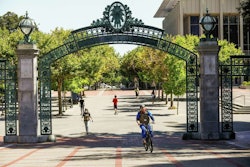DENTON, Texas
These days Mean Green means more than the green-jerseyed football team at the University of North Texas.
The campus also has a hot new cafeteria called Mean Greens. And as you might suspect, it serves up a lot of green, and otherwise healthy, food.
Steven Garza says he’s been eating most meals there since it opened in October. One day recently, he was dining on a turkey sandwich, three pieces of sushi, vegetable soup, milk and water.
Garza likes the fact that an entree generally has fewer than 300 calories and 10 grams of fat. And meals with an entree and three side dishes usually total no more than 400 calories, so it’s easy to keep track of how much you’re eating. Students are limited to one main dish but can eat as many side orders usually salads or vegetables as they want.
“In other cafeterias it’s unlimited. It’s the reason why people put on the Freshman 15,” said Garza, a self-described health nut.
Mean Greens, serving up about 1,000 meals over dinner and lunch, is doing a bit better than two other similar-sized cafeterias on the sprawling campus, said Regenia Phillips, director of dining services at UNT. The competing campus dining spots offer everything from barbecue to pizza to more traditional cafeteria lines. There are also two other larger dining halls on this campus of 32,000 students.
Mean Greens manager Peter Balabuch seems to be pleased with how his operation is doing.
“The people that have come like the offerings. We can keep them coming,” he said.
Phillips said that opening Mean Greens was a risk because even though students said they wanted healthy options, it was hard to tell if they would actually choose healthier.
Students today are more health-conscious, and there are “definitely more and more options,” said Jodi Smith of the National Association of College & University Food Services.
Across the country, university cafeterias are trying to serve up less processed and lower-salt items, more organic products and access to nutritional information on Web sites or in the cafeteria, said Russ Meyer, president of the National Association of College & University Food Services.
The Mean Greens Cafe showcases three potential meals each day and displays a nutritional tally. On one day, a display meal included a plate of herb-crusted chicken with peas, rice and carrots totaling 385 calories and 9.2 fat grams. Also offered were shrimp tacos with the same sides totaling 447 calories with about 10.7 fat grams, and a grilled chicken breast with peas, beans and carrots adding up to 289 calories with 6.5 grams of fat.
“I’m always looking at those little tags,” said 21-year-old Garza, who likes to get about 30 grams of protein per meal and not exceed 10 grams of fat.
Desserts are all 150 calories or less, with choices that include brownies, peanut butter cookies and a mini chocolate torte with strawberry sauce.
Low-calorie items are marked and among the offerings at the school’s other cafeterias, but in the Mean Greens cafe there’s less temptation.
As Phillips points out, choosing a chicken breast over a cheeseburger is a little more difficult when they’re sitting right next to each other.
She recalled talking to one student in the cafe after Mean Greens opened who said he would have liked to go back for second helpings of the main dish but when pressed he acknowledged he wasn’t actually hungry.
“There’s such a problem today with portion distortion,” said Kathy Butler, associate director of dining services at UNT. “We take care to give what a standard portion is. We’ve also put more emphasis on more vegetables.”
Noriko Tabata, 20, who came to UNT from Japan, said that the healthy selections at Mean Greens remind her of home and are a nice change from heavier American-style offerings. Tucking into a chocolate torte, she said there was another big advantage to the cafe: “Here, we can eat an under 150-calorie dessert.”
–Associated Press
There is currently 1 comment on this story.
Click here to post a comment.
© Copyright 2005 by DiverseEducation.com

